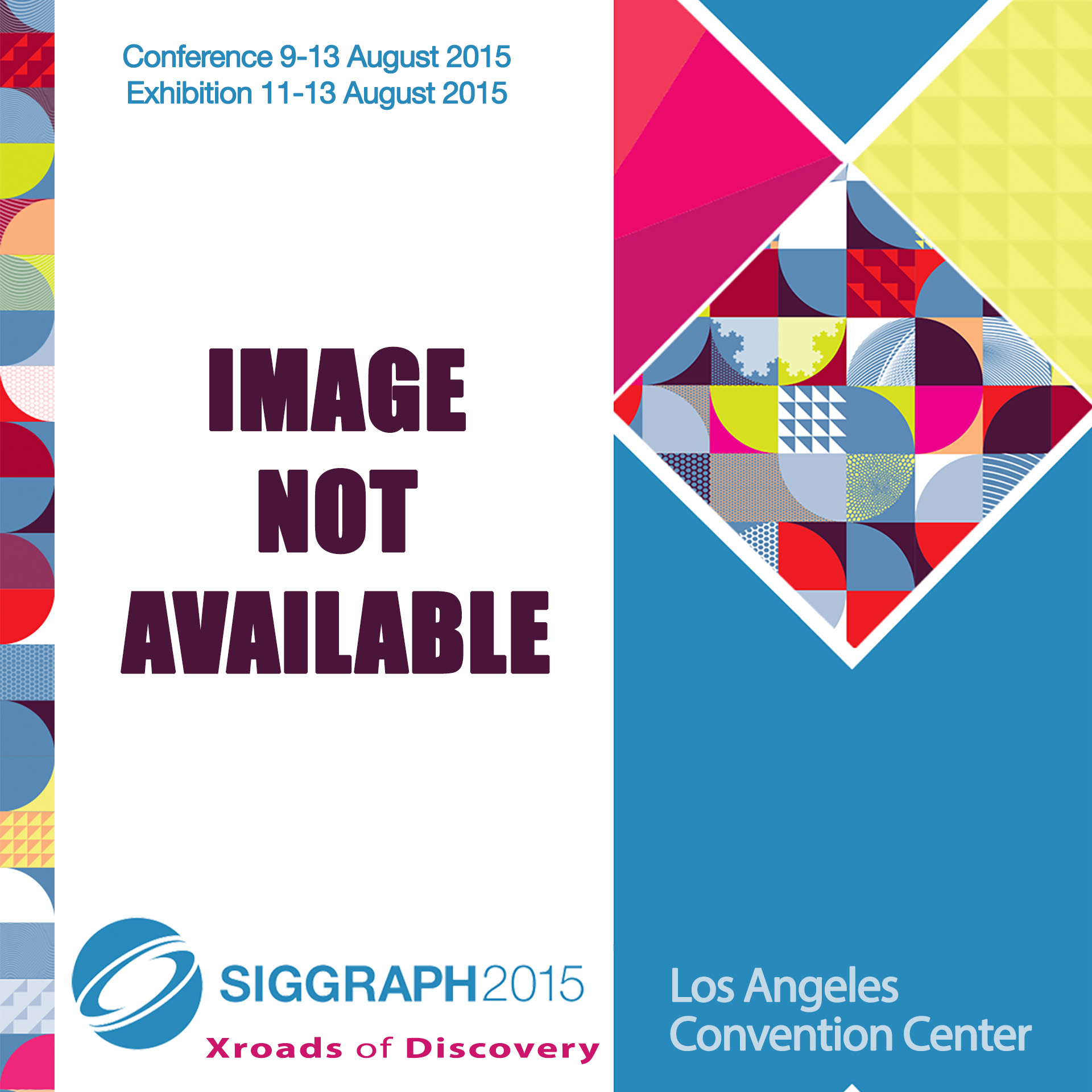“The SGGX microflake distribution”
Conference:
Type(s):
Title:
- The SGGX microflake distribution
Session/Category Title: Rendering Complex Appearance
Presenter(s)/Author(s):
Moderator(s):
Abstract:
We introduce the Symmetric GGX (SGGX) distribution to represent spatially-varying properties of anisotropic microflake participating media. Our key theoretical insight is to represent a microflake distribution by the projected area of the microflakes. We use the projected area to parameterize the shape of an ellipsoid, from which we recover a distribution of normals. The representation based on the projected area allows for robust linear interpolation and prefiltering, and thanks to its geometric interpretation, we derive closed form expressions for all operations used in the microflake framework. We also incorporate microflakes with diffuse reflectance in our theoretical framework.This allows us to model the appearance of rough diffuse materials in addition to rough specular materials. Finally, we use the idea of sampling the distribution of visible normals to design a perfect importance sampling technique for our SGGX microflake phase functions. It is analytic, deterministic, simple to implement, and one order of magnitude faster than previous work.
References:
1. Bala, K. 2014. Modeling cloth at micron resolution. In Proc. SPIE, vol. 9018, 90180J–90180J–6.Google Scholar
2. Crassin, C., Neyret, F., Lefebvre, S., and Eisemann, E. 2009. Gigavoxels : Ray-guided streaming for efficient and detailed voxel rendering. In Proc. ACM SIGGRAPH Symposium on Interactive 3D Graphics and Games, 15–22. Google ScholarDigital Library
3. Dupuy, J., Heitz, E., Iehl, J.-C., Poulin, P., Neyret, F., and Ostromoukhov, V. 2013. Linear efficient antialiased displacement and reflectance mapping. ACM Transactions on Graphics (Proc. SIGGRAPH Asia) 32, 6, 211:1–211:11. Google ScholarDigital Library
4. Heitz, E., and D’Eon, E. 2014. Importance sampling microfacet-based BSDFs using the distribution of visible normals. In Proc. Eurographics Symposium on Rendering, 103–112. Google ScholarDigital Library
5. Heitz, E. 2014. Understanding the masking-shadowing function in microfacet-based BRDFs. Journal of Computer Graphics Techniques 3, 2, 32–91.Google Scholar
6. Hill, S., Mcauley, S., Dupuy, J., Gotanda, Y., Heitz, E., Hoffman, N., Lagarde, S., Langlands, A., Megibben, I., Rayani, F., and De Rousiers, C. 2014. Physically based shading in theory and practice. In ACM SIGGRAPH Courses. Google ScholarDigital Library
7. Jakob, W., Arbree, A., Moon, J. T., Bala, K., and Marschner, S. 2010. A radiative transfer framework for rendering materials with anisotropic structure. ACM Transactions on Graphics (Proc. SIGGRAPH) 29, 4, 53:1–53:13. Google ScholarDigital Library
8. Jakob, W., 2010. Mitsuba renderer. http://www.mitsuba-renderer.org.Google Scholar
9. Kraus, M., and Bürger, K. 2008. Interpolating and downsampling rgba volume data. In Proceedings of the Vision, Modeling, and Visualization Conference, 323–332.Google Scholar
10. Marschner, S. R., Jensen, H. W., Cammarano, M., Worley, S., and Hanrahan, P. 2003. Light scattering from human hair fibers. ACM Transactions on Graphics (Proc. SIGGRAPH) 22, 3, 780–791. Google ScholarDigital Library
11. Neyret, F. 1995. A general and multiscale model for volumetric textures. In Graphics Interface, 83–91.Google Scholar
12. Neyret, F. 1998. Modeling animating and rendering complex scenes using volumetric textures. IEEE Transactions on Visualization and Computer Graphics 4, 1, 55–70. Google ScholarDigital Library
13. Olano, M., and Baker, D. 2010. Lean mapping. In Proc. ACM SIGGRAPH Symposium on Interactive 3D Graphics and Games, 181–188. Google ScholarDigital Library
14. Pharr, M., and Humphreys, G. 2010. Physically Based Rendering: From Theory to Implementation. Morgan Kaufmann Publishers. Google ScholarDigital Library
15. Schröder, K., Klein, R., and Zinke, A. 2011. A volumetric approach to predictive rendering of fabrics. Computer Graphics Forum (Proc. Eurographics Symposium on Rendering) 30, 4, 1277–1286. Google ScholarDigital Library
16. Schröder, K., Zhao, S., and Zinke, A. 2012. Recent advances in physically-based appearance modeling of cloth. ACM SIGGRAPH Asia 2012: Course Notes. Google ScholarDigital Library
17. Trowbridge, T. S., and Reitz, K. P. 1975. Average irregularity representation of a rough surface for ray reflection. Journal of the Optical Society of America 65, 5, 531–536.Google ScholarCross Ref
18. Walter, B., Marschner, S. R., Li, H., and Torrance, K. E. 2007. Microfacet models for refraction through rough surfaces. In Proc. Eurographics Symposium on Rendering, 195–206. Google ScholarDigital Library
19. Xu, K., Sun, W.-L., Dong, Z., Zhao, D.-Y., Wu, R.-D., and Hu, S.-M. 2013. Anisotropic spherical gaussians. ACM Transactions on Graphics (Proc. SIGGRAPH Asia) 32, 6, 209:1–209:11. Google ScholarDigital Library
20. Zhao, S., Jakob, W., Marschner, S., and Bala, K. 2011. Building volumetric appearance models of fabric using micro CT imaging. ACM Transactions on Graphics (Proc. SIGGRAPH) 30, 4, 44:1–44:10. Google ScholarDigital Library
21. Zhao, S., Jakob, W., Marschner, S., and Bala, K. 2012. Structure-aware synthesis for predictive woven fabric appearance. ACM Transactions on Graphics (Proc. SIGGRAPH) 31, 4, 75:1–75:10. Google ScholarDigital Library
22. Zhao, S., Hašan, M., Ramamoorthi, R., and Bala, K. 2013. Modular flux transfer: Efficient rendering of high-resolution volumes with repeated structures. ACM Transactions on Graphics (Proc. SIGGRAPH) 32, 4, 131:1–131:12. Google ScholarDigital Library




